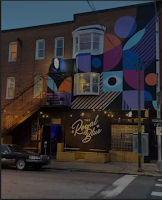Google UX Design
 I applied to Google’s UX design internship online through their application portal. My New York office offer was finalized in early April. Although the hiring process is quite opaque, I assume that I stood out in the candidate pool because of the diverse design projects I worked on outside of class and my in-depth progress for my design challenge. During my interviews, I also spoke confidently and engagingly about my designs.
I applied to Google’s UX design internship online through their application portal. My New York office offer was finalized in early April. Although the hiring process is quite opaque, I assume that I stood out in the candidate pool because of the diverse design projects I worked on outside of class and my in-depth progress for my design challenge. During my interviews, I also spoke confidently and engagingly about my designs. I lead the development of two UX projects for Google Docs and proposed new solutions that make it easier for users to work in Docs. Being the first to work on a new problem space at Google, I wasn’t given specific design instructions. Instead, I took it into my own hands to research the problem area and discover useful data to identify previously unthoughtful design directions. I also actively prepared and set up user studies to test my ideas and learn more about user behavior. Throughout the process, I kept my design on track through collaborative meetings with PMs, UX managers, and other designers. I’m proud of striking the balance between working independently and collaboratively and taking active steps to solve an intricate design challenge.
I lead the development of two UX projects for Google Docs and proposed new solutions that make it easier for users to work in Docs. Being the first to work on a new problem space at Google, I wasn’t given specific design instructions. Instead, I took it into my own hands to research the problem area and discover useful data to identify previously unthoughtful design directions. I also actively prepared and set up user studies to test my ideas and learn more about user behavior. Throughout the process, I kept my design on track through collaborative meetings with PMs, UX managers, and other designers. I’m proud of striking the balance between working independently and collaboratively and taking active steps to solve an intricate design challenge.
I have grown so much as a designer and person from this internship. My biggest take-aways are:
1. Don’t be afraid to talk with designers and other professionals about life, work, and everything else in between. At Google, I arranged countless coffee chats, lunches, and 1-on-1s with Googlers that I had never met before. Everyone I met had diverse expertise and plenty of inspiration, ideas, guidance to offer.
2. Learn to see and craft stories around your designs. The work you make never lives in a vacuum. I often thought of design as artifacts: type on a page, image, colors in an illustration, webpage on a screen. At Google, I learned to acutely examine UX design not just as interfaces but as products that people use in their daily life. By evaluating user journeys, I recognized how these digital touch points aren’t just static screens but react and depend on settings, actions, and conditions beyond the product itself.
I solidified my interest in designing for tech. I connected with designers of various seniority,
experience, and specialty. I plan to work in Tech for at least a couple of years before moving onto other fields.


